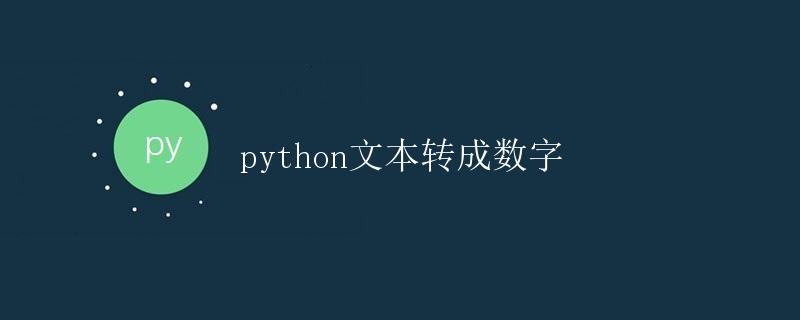python文本转成数字

在自然语言处理技术的发展中,将文本转换为数字表示是非常重要的一步。这样做的好处是可以让计算机更好地理解文本并进行各种处理,比如文本分类、情感分析、文本生成等。本文将详细介绍如何使用Python将文本转换为数字表示。
1. 文本预处理
在将文本转换为数字之前,我们通常需要进行一些文本预处理的步骤,包括去除标点符号、停用词、转换为小写等。下面是一个简单的文本预处理函数示例:
import re
import string
def preprocess_text(text):
# 去除标点符号
text = re.sub('[%s]' % re.escape(string.punctuation), '', text)
# 转换为小写
text = text.lower()
return text
2. 构建词典
接下来,我们需要构建一个词典,将每个词映射到一个唯一的数字。我们可以使用Counter来统计文本中每个词的出现次数,并根据出现次数进行排序。
from collections import Counter
def build_vocab(texts, min_freq=1):
vocab = Counter()
for text in texts:
words = text.split()
vocab.update(words)
vocab = {word: idx for idx, (word, freq) in enumerate(vocab.items()) if freq >= min_freq}
return vocab
3. 文本转换为数字表示
有了词典之后,我们就可以将文本转换为数字表示了。每个词在词典中对应一个数字,我们可以使用这个数字来表示这个词。
def text_to_sequence(text, vocab):
words = text.split()
sequence = [vocab[word] for word in words if word in vocab]
return sequence
示例代码
texts = ['I love Python', 'Python is a great language']
processed_texts = [preprocess_text(text) for text in texts]
vocab = build_vocab(processed_texts)
print(vocab)
# {'i': 0, 'love': 1, 'python': 2, 'is': 3, 'a': 4, 'great': 5, 'language': 6}
sequences = [text_to_sequence(text, vocab) for text in processed_texts]
print(sequences)
# [[0, 1, 2], [2, 3, 4, 5, 6]]
通过以上示例代码,我们成功将文本转换为数字表示。这种表示方法可以方便地输入到模型中进行处理,是自然语言处理领域的一项基础工作。
 极客笔记
极客笔记